Track rollers and guide rails are essential components in linear motion systems, enabling smooth movement and reducing friction.
Designed for durability, they are crucial for precise operation in various industrial applications, facilitating efficient and reliable performance across different machinery and equipment.
What Are Track Rollers?
Track rollers are cylindrical or spherical components designed to facilitate smooth linear motion in various mechanical systems.
They are typically mounted on a frame or carriage and move along a guide rail, reducing friction and ensuring precise alignment.
Available in different materials like steel or plastic, track rollers are widely used in industrial machinery, automation, and transportation systems for reliable operation.

Their design allows them to handle varying loads and environmental conditions, making them essential for applications requiring consistent and efficient performance.
What Are Guide Rails?
Guide rails are rigid, linear tracks designed to provide a precise path for motion components like track rollers to follow.
Typically made of hardened steel or other durable materials, they are engineered to withstand heavy loads and ensure smooth, consistent movement.
Guide rails are often used in conjunction with track rollers to maintain alignment and reduce friction in industrial, automotive, and automation systems.
Their design and material selection depend on the application, ensuring reliability and longevity in various operating conditions.
The Importance of Track Rollers and Guide Rails in Linear Motion Systems
Track rollers and guide rails are critical for enabling smooth, precise, and efficient linear motion in various mechanical systems.
They work together to reduce friction, ensuring consistent and reliable operation while minimizing wear and tear on moving parts.
By providing a stable and guided path, they enhance the accuracy and performance of machinery in industrial, automotive, and automation applications.
Their durability and load-carrying capacity make them indispensable for maintaining operational efficiency and extending the lifespan of equipment.
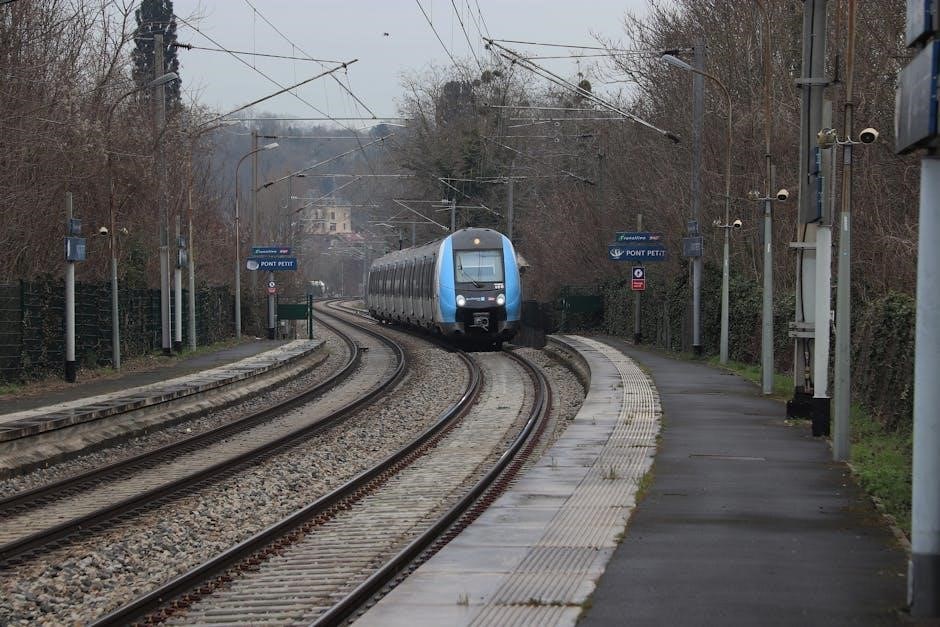
Overall, they play a vital role in achieving optimal motion control and system reliability across diverse industries.
Types of Track Rollers
Track rollers are available in various designs, including cylindrical, spherical, and flat types, each offering unique features for specific applications and load requirements.
Cylindrical Track Rollers
Cylindrical track rollers are designed with a circular cross-section, making them ideal for smooth operation in linear motion systems. They are typically mounted on shafts or integrated into guide rails, providing excellent load-carrying capacity and precision. These rollers are widely used in industrial machinery and automation, where heavy loads and high accuracy are required. Made from durable materials like steel, they ensure long-lasting performance. Their simple design allows for easy installation and maintenance, making them a popular choice for applications demanding consistent and reliable motion.
Spherical Track Rollers
Spherical track rollers feature a rounded, spherical surface, allowing for multidirectional movement and self-alignment. They are ideal for applications requiring smooth operation in varying directions, such as robotic arms or material handling systems. These rollers are designed to handle heavy loads and shocks, making them durable and reliable. Their ability to accommodate misalignment reduces wear and tear on adjacent components. Spherical track rollers are widely used in industrial automation and transportation systems, offering versatility and consistent performance in challenging environments. Their robust construction ensures long service life, making them a valuable component in modern machinery.
Flat Track Rollers
Flat track rollers are designed with a flat, smooth surface, typically circular or rectangular, making them ideal for open tracks without grooves. They are commonly used in applications requiring stable, low-friction movement, such as CNC machines, automation systems, and material handling equipment. These rollers are known for their versatility and ability to handle varying loads while maintaining smooth operation. Their flat design allows for easy installation and alignment, reducing the risk of misplacement. Flat track rollers are a reliable choice for industrial and transportation systems, offering consistent performance and durability in demanding environments.

Applications of Track Rollers and Guide Rails
Track rollers and guide rails are widely used in CNC routers, automation systems, and material handling equipment, ensuring precise and smooth linear motion in various industrial applications.
Industrial Machinery and Automation
In industrial machinery and automation, track rollers and guide rails play a pivotal role in enabling precise and smooth linear motion. They are integral to CNC routers, robotic systems, and automated assembly lines, ensuring consistent performance and durability. These components are designed to handle heavy loads and repetitive motions, making them essential for maintaining production efficiency. By providing stable guidance and reducing friction, track rollers and guide rails contribute to the overall reliability and accuracy of industrial automation systems, thereby optimizing manufacturing processes and productivity.
Transportation Systems
Track rollers and guide rails are widely used in transportation systems to ensure smooth and efficient operation. In railways, they are integrated into train bogies and track systems to guide movement and reduce wear. Similarly, in metro and tram systems, these components provide stable guidance for vehicles, enhancing passenger safety and comfort; They are also used in conveyor systems for luggage handling at airports and in automated people movers. Their durability and ability to handle heavy loads make them indispensable in maintaining the reliability of modern transportation infrastructure.
Material Handling and Logistics
Track rollers and guide rails play a vital role in material handling and logistics systems, ensuring smooth and efficient movement of goods. They are commonly used in conveyor systems, automated storage and retrieval systems, and sorting equipment. These components help guide carts, containers, and packages along predefined paths, minimizing wear and tear on equipment. Their durability and precision enable reliable operation in high-volume logistics environments, reducing downtime and enhancing overall productivity. Additionally, they are used in overhead cranes and gantry systems, further highlighting their versatility in modern material handling applications.
Key Features to Consider When Selecting Track Rollers and Guide Rails
Key features include load capacity, durability, motion precision, and material selection for specific environments to ensure optimal performance and longevity in various applications.
Load Capacity and Durability
Load capacity and durability are critical factors in selecting track rollers and guide rails, ensuring they can handle the intended weight and stress without premature wear.
Durable materials, such as hardened steel, and robust designs are essential for maintaining performance in demanding environments and extending the lifespan of the components.
High-quality track rollers and guide rails are designed to withstand heavy loads and repetitive motion, making them suitable for industrial machinery, automation, and material handling systems.
Proper selection ensures reliable operation, reduces downtime, and minimizes the need for frequent replacements, ultimately saving costs and improving efficiency.
Motion Precision and Smoothness
Track rollers and guide rails are designed to ensure precise and smooth motion in linear systems, minimizing friction and vibration during operation.
Advanced designs, such as ball-bearing rollers and polished guide rails, enable consistent movement, making them ideal for applications requiring high accuracy and control.
Smooth motion reduces mechanical stress on connected components, ensuring reliable performance and extending the lifespan of the system.
Material Selection for Different Environments
Track rollers and guide rails are available in various materials to suit different environmental conditions, ensuring optimal performance and longevity.
For corrosive or high-moisture environments, stainless steel or polymer-coated options are ideal, offering resistance to rust and wear.
In high-temperature settings, heat-resistant materials are used to maintain stability and prevent degradation, while heavy-duty steel is preferred for heavy loads and harsh industrial conditions.
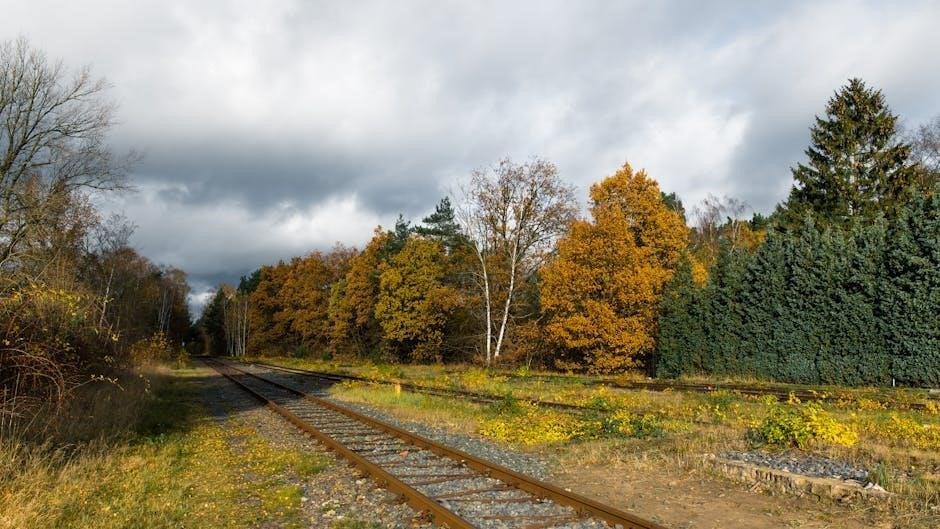
Maintenance and Repair of Track Rollers and Guide Rails
Regular inspection, cleaning, and lubrication are crucial for maintaining track rollers and guide rails, ensuring smooth operation and preventing premature wear and tear.
Regular Inspection and Cleaning
Regular inspection of track rollers and guide rails is vital to ensure optimal performance and longevity. Inspections should be conducted at scheduled intervals to identify wear, misalignment, or contamination.
Cleaning involves removing dirt, debris, and grease, which can impede smooth motion. Use appropriate solvents and brushes to avoid damaging the surfaces. Neglecting these steps can lead to premature wear and system failure, emphasizing the importance of consistent maintenance practices.
Lubrication Requirements
Lubrication is essential for maintaining the performance and longevity of track rollers and guide rails. Proper greasing reduces friction, prevents wear, and ensures smooth operation. Use high-quality, water-resistant grease suitable for the operating conditions and load requirements.
Apply lubricant at recommended intervals, typically every 500 to 1,000 operating hours, depending on usage. Insufficient lubrication can lead to overheating, premature wear, and reduced load capacity, ultimately compromising system efficiency and lifespan.
Replacement and Refurbishment Options
Regular inspection helps identify worn or damaged track rollers and guide rails, ensuring timely replacement or refurbishment. Replace components when wear exceeds manufacturer-recommended limits to maintain system performance and safety.
Refurbishment is a cost-effective alternative, involving cleaning, polishing, and replacing worn parts. Proper replacement and refurbishment extend the lifespan of linear motion systems, minimizing downtime and ensuring optimal functionality across industrial applications.
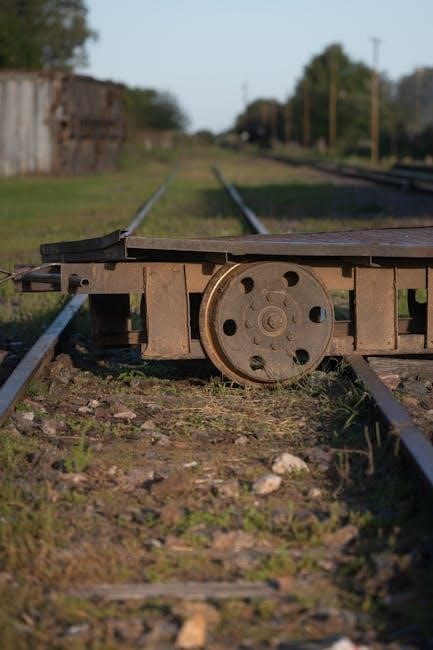
How to Choose the Right Track Rollers and Guide Rails for Your Needs
Assess your application’s load capacity, precision, and environmental conditions to select suitable track rollers and guide rails. Consult manufacturers for tailored solutions and compare models to ensure compatibility and performance.
Consider material durability, motion smoothness, and maintenance requirements. Prioritize brands with proven reliability and read reviews to make informed decisions, balancing quality and cost-effectiveness for optimal results.
Understanding Your Application Requirements
To select the right track rollers and guide rails, start by evaluating your application’s specific demands. Consider the load capacity, required precision, and environmental conditions. Assess whether the system needs high durability, smooth motion, or resistance to corrosion. Identify the type of machinery or equipment the components will be used with, as well as any space or weight constraints. Determine the desired speed and accuracy levels for optimal performance. Understanding these factors ensures you choose components that meet your operational needs and enhance system efficiency. This foundational step guides all subsequent decisions.
Consulting with Manufacturers and Suppliers
Engaging with manufacturers and suppliers is crucial for selecting the right track rollers and guide rails. They offer expertise and can provide customized solutions tailored to your specific application needs. Discuss your load requirements, environmental conditions, and desired performance levels to ensure the components meet your expectations. Reputable suppliers like Emerson Bearing and VEVOR specialize in these products, offering high-quality options with advanced features. Don’t hesitate to ask for recommendations or technical support to make informed decisions. This collaboration ensures you receive durable, precise, and application-specific solutions, enhancing your system’s overall efficiency and reliability.
Comparing Different Models and Brands
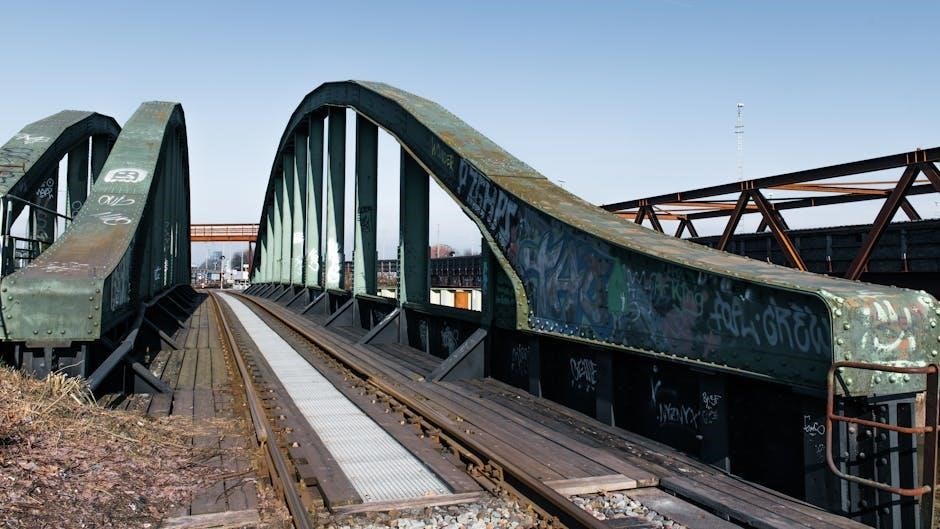
When comparing different models and brands of track rollers and guide rails, consider factors like load capacity, precision, and durability. Research brands such as Rollon, Chambrelan, and VEVOR, known for their high-performance solutions. Evaluate materials suited to your application, such as heavy-duty steel or corrosion-resistant options. Look for advanced features like ball or roller bearings and size variations to match your system’s needs. Reading customer reviews and performance metrics can provide insights into reliability. Additionally, compare warranties and after-sales support to ensure long-term satisfaction and functionality.

Common Challenges and Solutions
Common challenges include wear and tear, noise, and installation difficulties. Solutions involve regular maintenance, proper lubrication, and precise alignment during setup to ensure smooth operation and longevity.
Wear and Tear Issues
Wear and tear on track rollers and guide rails can lead to reduced performance and premature failure. Regular inspection and cleaning are crucial to identify worn components early. Proper lubrication helps minimize friction and extends lifespan. Replacing damaged parts promptly prevents further damage to the system. Aligning guide rails correctly during installation also reduces uneven wear. Using high-quality materials and maintaining optimal operating conditions are essential to mitigate wear and tear issues effectively over time.
Noise and Vibration Problems
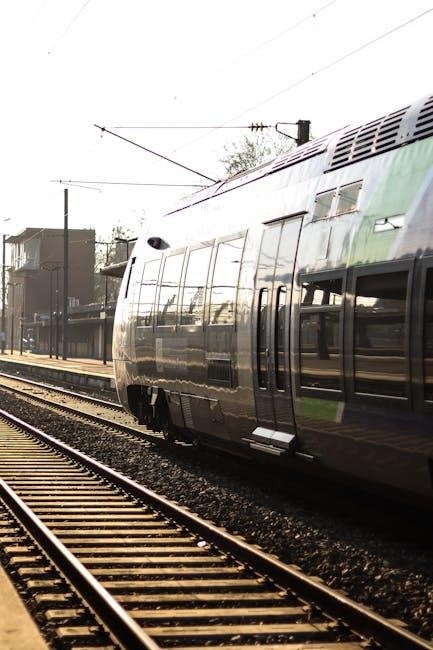
Noise and vibration issues in track rollers and guide rails often arise from improper lubrication, misalignment, or worn components. Regular maintenance, including lubrication and inspection, can help mitigate these problems. Ensuring proper alignment during installation reduces vibration and noise. Using high-quality materials and damping pads can also minimize operational noise. Addressing these issues promptly prevents further damage and enhances the system’s overall performance and longevity.

Alignment and Installation Difficulties
Alignment and installation challenges with track rollers and guide rails can lead to inefficient operation and premature wear. Proper alignment ensures smooth movement and prevents uneven stress on components. Improper installation can result in misalignment, causing friction and potential system failure. Using precision tools and following manufacturer guidelines is crucial for accurate setup. Regular checks during installation help identify and correct issues early, ensuring optimal performance and longevity of the system.
Track rollers and guide rails are crucial for efficient linear motion systems, ensuring smooth operation and durability. With advancements in materials and technology, their applications continue to expand, offering enhanced performance and reliability across industries.
Future Trends in Track Roller and Guide Rail Technology
Future trends in track roller and guide rail technology emphasize improved durability, precision, and integration with smart systems. High-performance materials and self-lubricating designs are being developed to enhance longevity and reduce maintenance. Automation and IoT connectivity are increasingly incorporated, enabling real-time monitoring and predictive maintenance. Modular and customizable solutions are gaining popularity, allowing tailored applications across industries. Additionally, advancements in lightweight materials and energy-efficient designs are expected to drive innovation, making track rollers and guide rails more adaptable to evolving industrial needs while maintaining superior performance and reliability.
